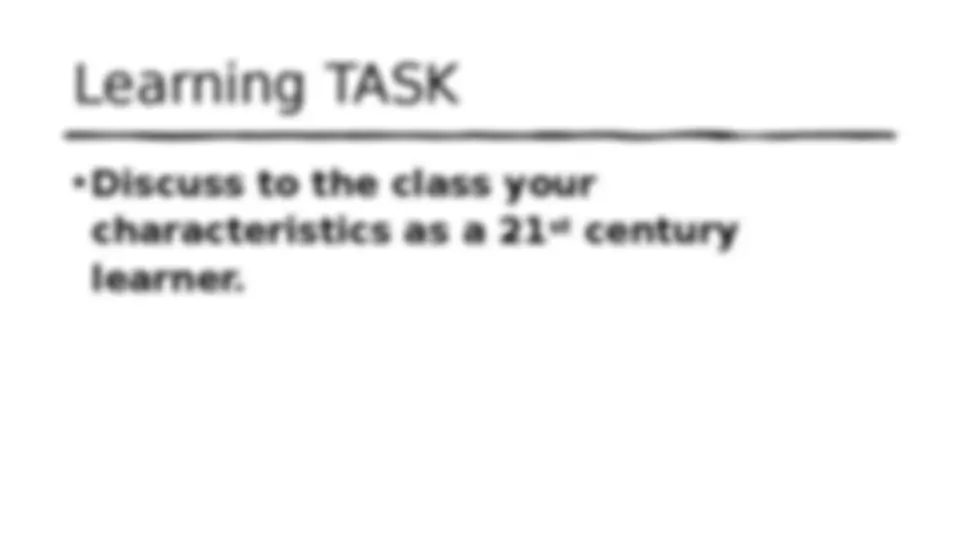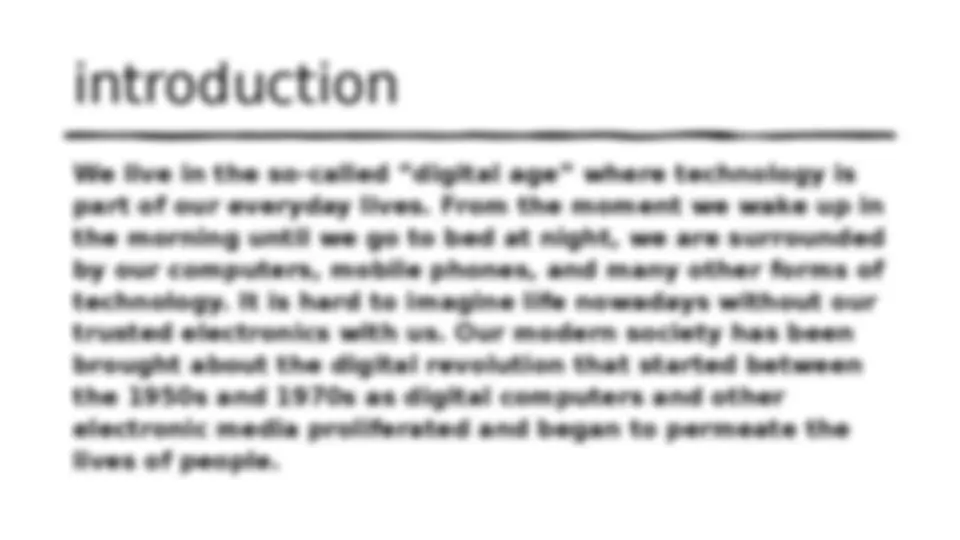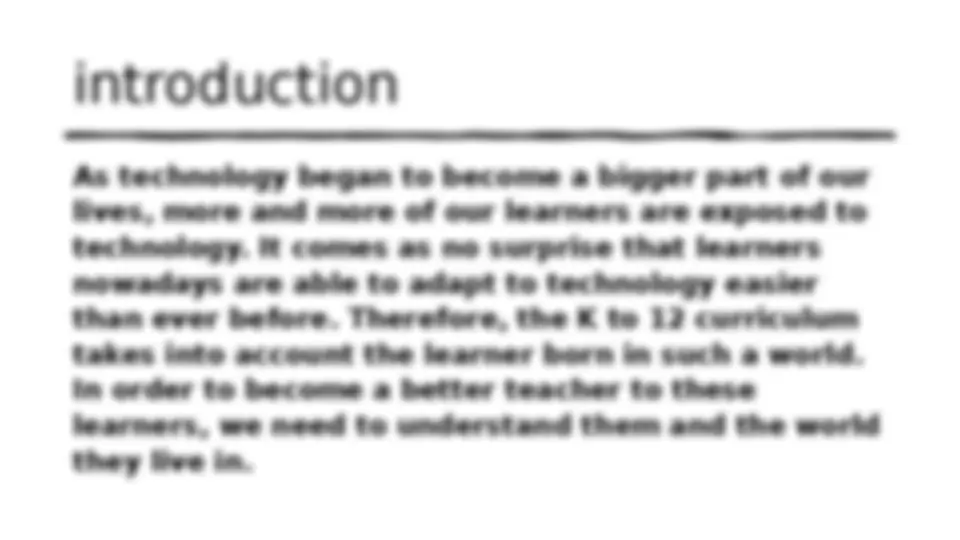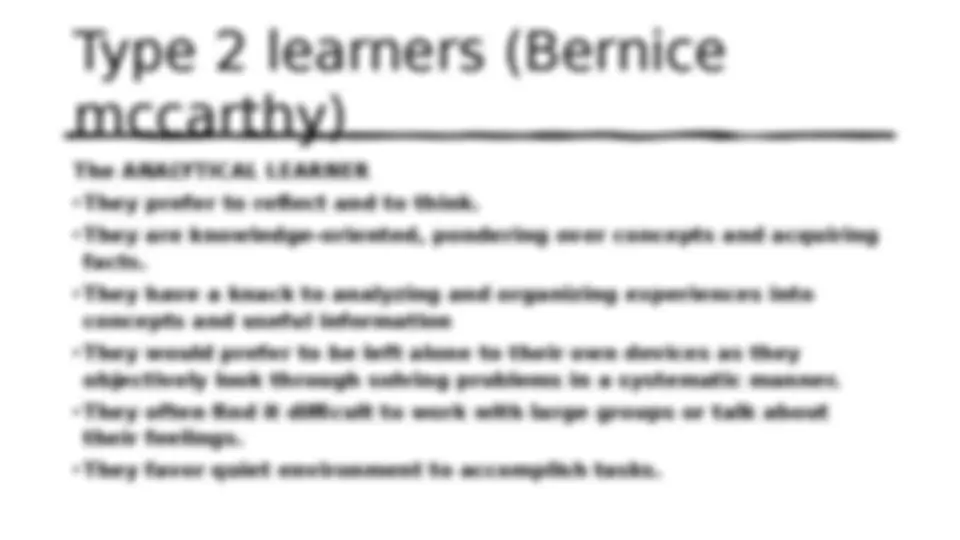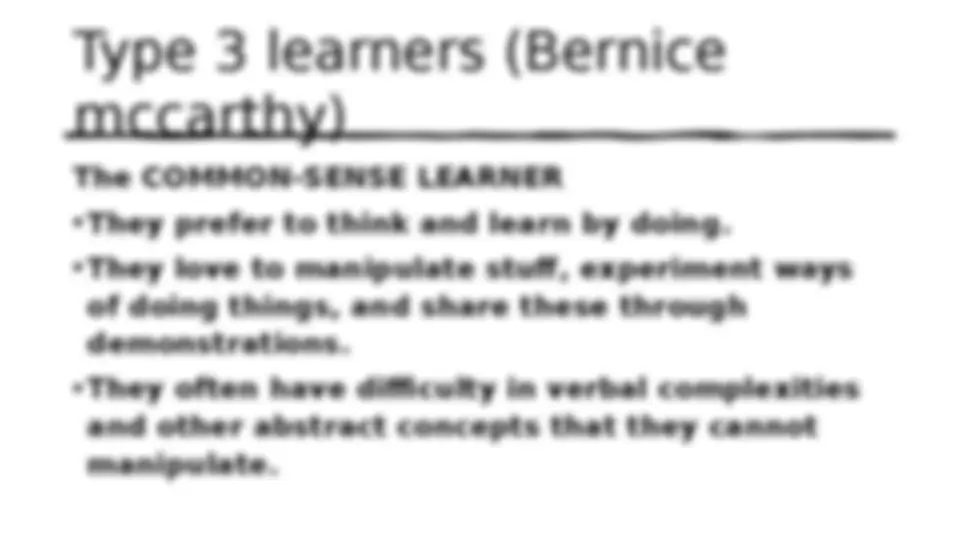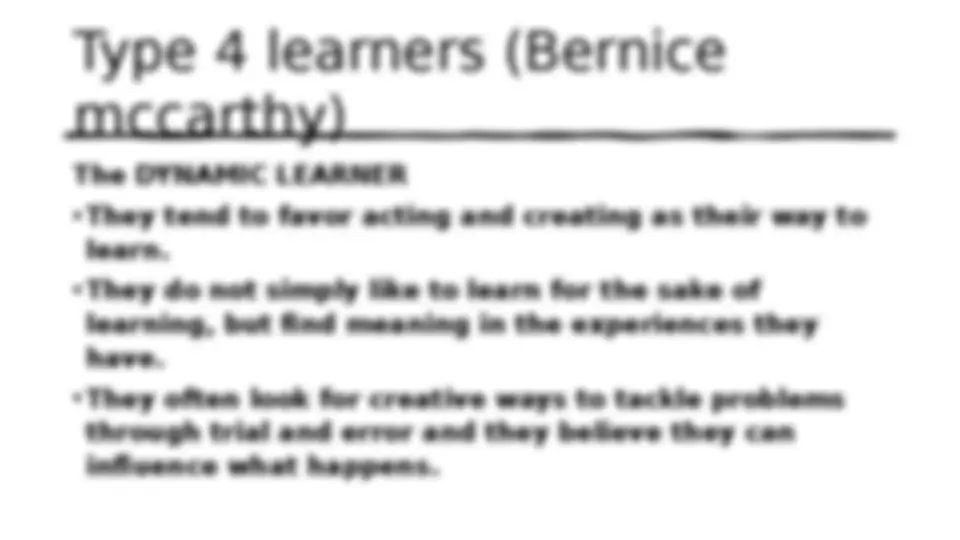Download This is about our lecture in BEED 34 and more Slides English Literature in PDF only on Docsity!
Learners in the Eyes
of the K to 12
Curriculum
Lesson # 2
BEED 34
Learning objectives
- (^) Describe the characteristics of the target learners of the K to 12 Curriculum; and
- (^) Reflect on the ways the learners could be taught in the K to 12 curriculum
introduction We live in the so-called “digital age” where technology is part of our everyday lives. From the moment we wake up in the morning until we go to bed at night, we are surrounded by our computers, mobile phones, and many other forms of technology. It is hard to imagine life nowadays without our trusted electronics with us. Our modern society has been brought about the digital revolution that started between the 1950s and 1970s as digital computers and other electronic media proliferated and began to permeate the lives of people.
introduction
As technology began to become a bigger part of our
lives, more and more of our learners are exposed to
technology. It comes as no surprise that learners
nowadays are able to adapt to technology easier
than ever before. Therefore, the K to 12 curriculum
takes into account the learner born in such a world.
In order to become a better teacher to these
learners, we need to understand them and the world
they live in.
Type 1 learners (Bernice mccarthy) The IMAGINATIVE LEARNER
- (^) They are more feeling and reflective, preferring to speak about their experiences, listening to others, and responding to them.
- (^) They work well with others discussing ideas, brainstorming, and examining relationships.
- (^) They focus more on finding out “why” this should be learned.
Type 2 learners (Bernice mccarthy) The ANALYTICAL LEARNER
- (^) They prefer to reflect and to think.
- (^) They are knowledge-oriented, pondering over concepts and acquiring facts.
- (^) They have a knack to analyzing and organizing experiences into concepts and useful information
- (^) They would prefer to be left alone to their own devices as they objectively look through solving problems in a systematic manner.
- (^) They often find it difficult to work with large groups or talk about their feelings.
- (^) They favor quiet environment to accomplish tasks.
Type 4 learners (Bernice mccarthy) The DYNAMIC LEARNER
- (^) They tend to favor acting and creating as their way to learn.
- (^) They do not simply like to learn for the sake of learning, but find meaning in the experiences they have.
- (^) They often look for creative ways to tackle problems through trial and error and they believe they can influence what happens.
Group activity (30 minutes)
1. What learning styles do you think is more representative of today’s **learners? What behaviors would support your idea?
- Provided the current picture of our learners, what do you think are the** immediate challenges that the teaching-learning process could have? **How could we possibly address these challenges?
- Given the kind of learners we have in our classrooms, what traits should** teachers in the modern classroom have? Describe how each trait could **help in the teaching-learning process.
- With the understanding of the learners, how could you incorporate** technology in the teaching of the different macro skill?

